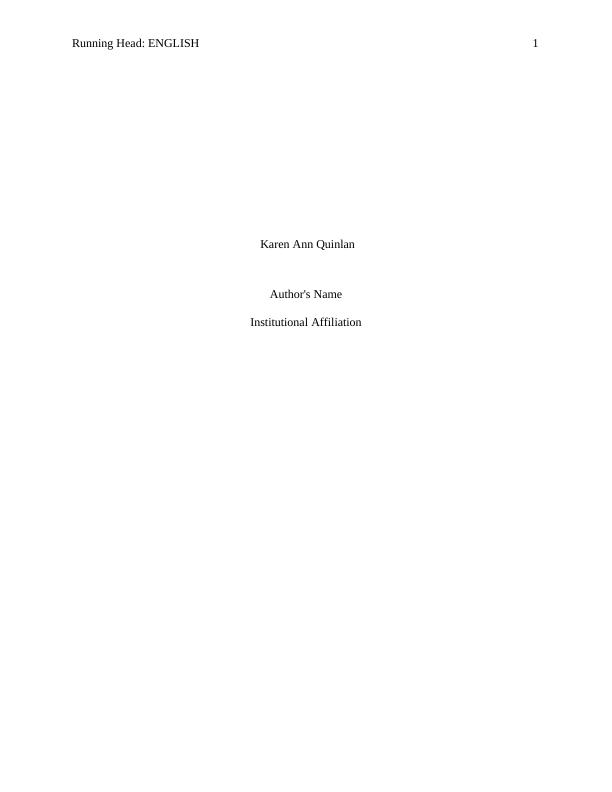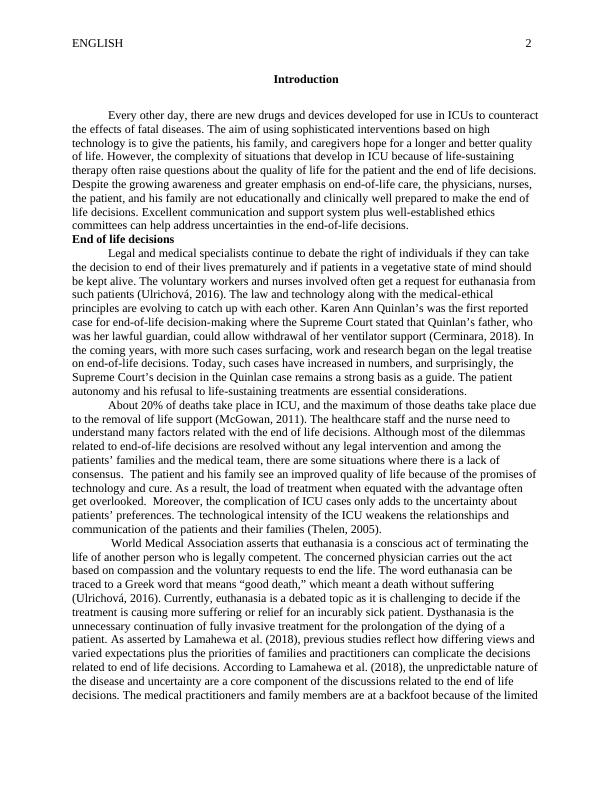End of Life Decisions: The Case of Karen Ann Quinlan
Develop an in-service education product concerning end of life decisions based on the case of Karen Ann Quinlan. Analyze the facts and court holding, the law(s) relied upon, the actions and beliefs of the hospital and parents, and the end of life issues involved.
8 Pages3864 Words368 Views
Added on 2022-12-01
About This Document
This article discusses the legal and ethical issues surrounding end-of-life decisions through the case of Karen Ann Quinlan. It explores the importance of patient autonomy and the role of healthcare professionals in making these decisions. The article also highlights the impact of the Quinlan case on medical and legal research.
End of Life Decisions: The Case of Karen Ann Quinlan
Develop an in-service education product concerning end of life decisions based on the case of Karen Ann Quinlan. Analyze the facts and court holding, the law(s) relied upon, the actions and beliefs of the hospital and parents, and the end of life issues involved.
Added on 2022-12-01
ShareRelated Documents
End of preview
Want to access all the pages? Upload your documents or become a member.
Legalization of Euthanasia in America: A Debate on Humanitarian Grounds
|8
|2229
|177
Euthanasia: A medical practice of providing east death to patients with chronic diseases without recovery
|6
|1399
|149
Karen Quinlan—The Case Study Analysis
|7
|2132
|424
Organizational And Administrative Ethics In Health Care
|4
|947
|22
Nurses’ attitudes towards euthanasia: a cross-sectional study in Iran
|6
|5661
|133
Health Ethics
|4
|531
|147



